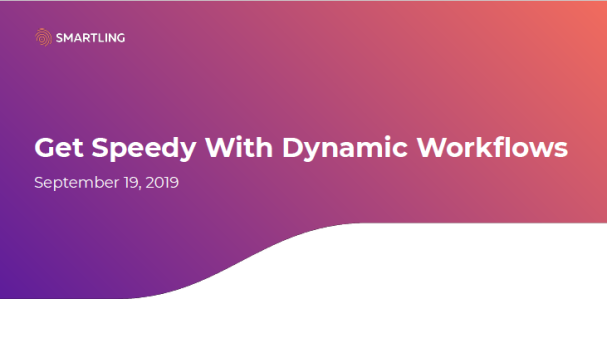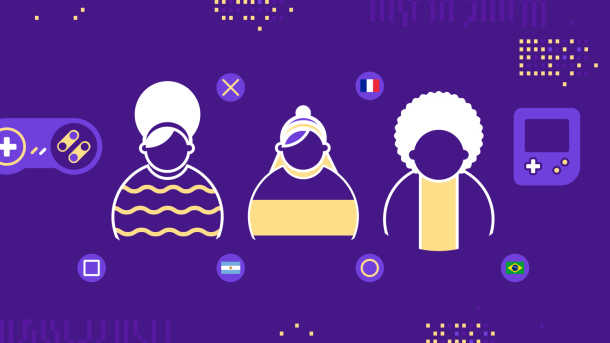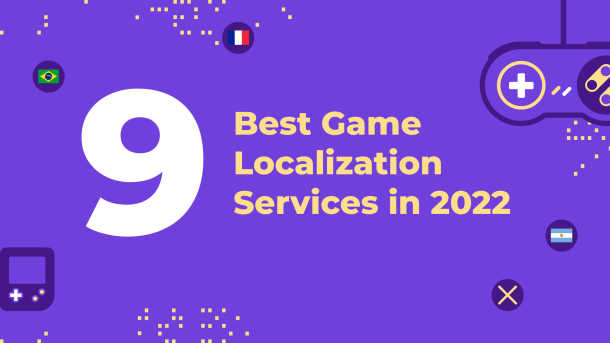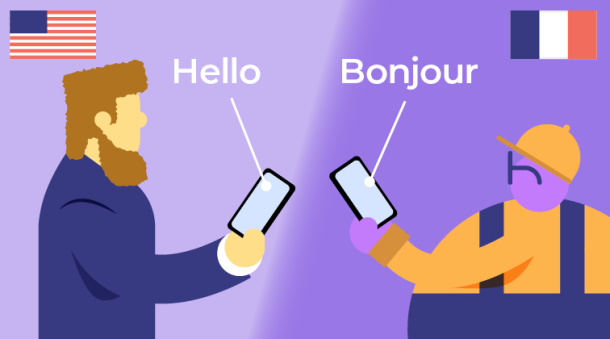So, you've read a little bit about what it means to localize your game, and why it's so critical to the video game industry and for your success with your new gamer audiences. Now, you may be wondering, how do I get started?
Well, one thing is certain: games have a lot of moving pieces behind the scenes done by game developers and designers, including the code of the game itself, UI elements, cutscenes, character dialogue, and in-game texts like quest descriptions and item names.
Managing video game translation and localization of all these elements will require proper localization strategy, systems, and procedures in place to ensure that content is translated at the highest quality possible while remaining consistent and true to the game.
What Does Localization Involve?
The process of localization will encompass quite a bit more than simply translating the text within your game into a new language for your target market.
Beginning right at the start, proper planning and internationalization of your game will set your team up for success.
When we discuss successful localization, the process will involve the following:
1. Run a Content Analysis
This is when your team will determine exactly what needs to be translated, what resources are necessary for the project, who the target audience for localization will be, and what elements of the game will need to be translated and adapted.
Does this include text and subtitles, or will there be voiceovers and dubbing that need to be recorded, for example?
2. Develop a Lockit
A localization kit, or lockit, will be your translator's complete guide to your game, game content, and other related content, essentially your linguistic asset to assist translators.
This is where your localization team will document any and all information that your translators will need to maintain brand consistency, but also stay true to the context of the game.
This is also where you will include your in-game information, for example, the idiosyncrasies of your game's world, items, or unique story elements that will dictate the proper terminology for translation.
3. Localize Your Code
After determining exactly what needs to be translated, you will need a way to pull those strings from your code and push them into a Translation Management System (TMS).
Your game experience cannot be translated if it is not written in a way to be translated.
Depending on the repository or tech stack you are using to build your mobile app, there will be different best practices for localizing that code. iOS and Android games, for example, will need to follow iOS and Android localization standards, respectively.
4. Integrate With a Translation Management System
Localizing your code will produce resource files, which will house all of the strings and content to be translated into different languages.
You will then need to integrate your repository, or another tech, with a Translation Management System to bring those strings into the platform to be translated. The easiest way is through pre-built integrations or custom-built connectors for your specific repository that will ingest content into a TMS.
The exact workflow will differ depending on each repository, but the general concept remains.
5. The Actual Translation Itself
After your strings are isolated in a separate resource, they can be sent over to linguists to work directly on the translation process.
This is where we will begin to see the benefits of utilizing a TMS for your video game localization process. Instead of attempting to merge all of your resource files together, it is best to let the TMS handle that for you.
By leaving these resource files in their native format, your TMS will understand how to pull them into the platform to be worked on by translators. Everything will be centralized into one platform for the translation work to happen.
This is when translators will utilize your lockit, and any other context provided, to translate each individual string into the target language.
6. Regional Localization
Beyond just the translation, your game will need to adapt specific elements, such as cultural references, depending on the targeted region.
In our previous installment, we discussed how Blizzard worked with a local Chinese publisher to adapt World of Warcraft for the Chinese market by altering the player models for certain characters.
Some games might even need to consider reworking part of the story or visual elements like cutscenes to adapt to a culture and region.
7. Quality Assurance
As part of any translation process, quality assurance is incredibly important. Translations will generally be written by one translator, and edited by an independent translator to check for any grammatical, spelling, or linguistic issues. This is one best practice to ensure high-quality translations.
When it comes to games, it is also important to ensure that translations keep the context of the game in mind.
For example, a fantasy-based game might require a different approach than a military-based game in regards to appropriate terminology.
8. Integration Into Your Game
After the content is translated from English or the source language, then checked, edited, and approved, the next step is to integrate that text back into the localized version of the game.
This is when the text will begin to meet other elements that have been altered in the localization process, like new character models or altered cutscenes and graphics.
The process can also involve changing and adjusting the UI/UX to make sure everything fits properly. Sometimes code might need to be tweaked to add the translated content into the game.
Determine Your Release Plan Early On
While releasing your game for sale to the gaming market is the last step of the journey, it must actually be considered early on in the development stage - especially when it comes to localization.
With two main tactical strategies for releasing a localized game, your team will have to determine which will be the right path forward.
Post-Gold
In short, the game only undergoes translation and localization after the original version in its native language is released.
This enables translators to work on a completed project, rather than just bits and pieces at one time.
This can also provide greater context to the translators, having a stronger understanding of what the end result should look like.
Simultaneous Shipment
All versions of the game are released at the same time. The major benefit here is monetary value -- games don't have the longest life cycle, so to maximize potential it makes sense to ship everything at once to leverage the interest and buzz.
The downside here is that translators aren't working with full or complete context. This can lead to more translation issues or errors, with less time to resolve them.
It is worth noting, however, that modern games will generally always require updates and ongoing localization efforts. Downloadable content, future unlockable, gameplay expansions, seasonal events, and releases will all require their own localization projects and translation efforts.
Simplify Video Game Localization With a TMS
Translation Management Systems enable teams to centralize the entire translation and localization process into one platform, simplifying the process of ingesting content for translation, automating the process around translation, and enabling developers to measure the progress of every translation step.
With total control, your team will be able to work directly with translators to ensure consistency and quality throughout the process.
Not sure of how to get started with your game localization? Don't worry, we've got you covered. Book a meeting to learn more.






